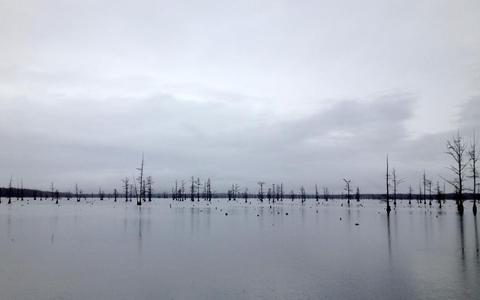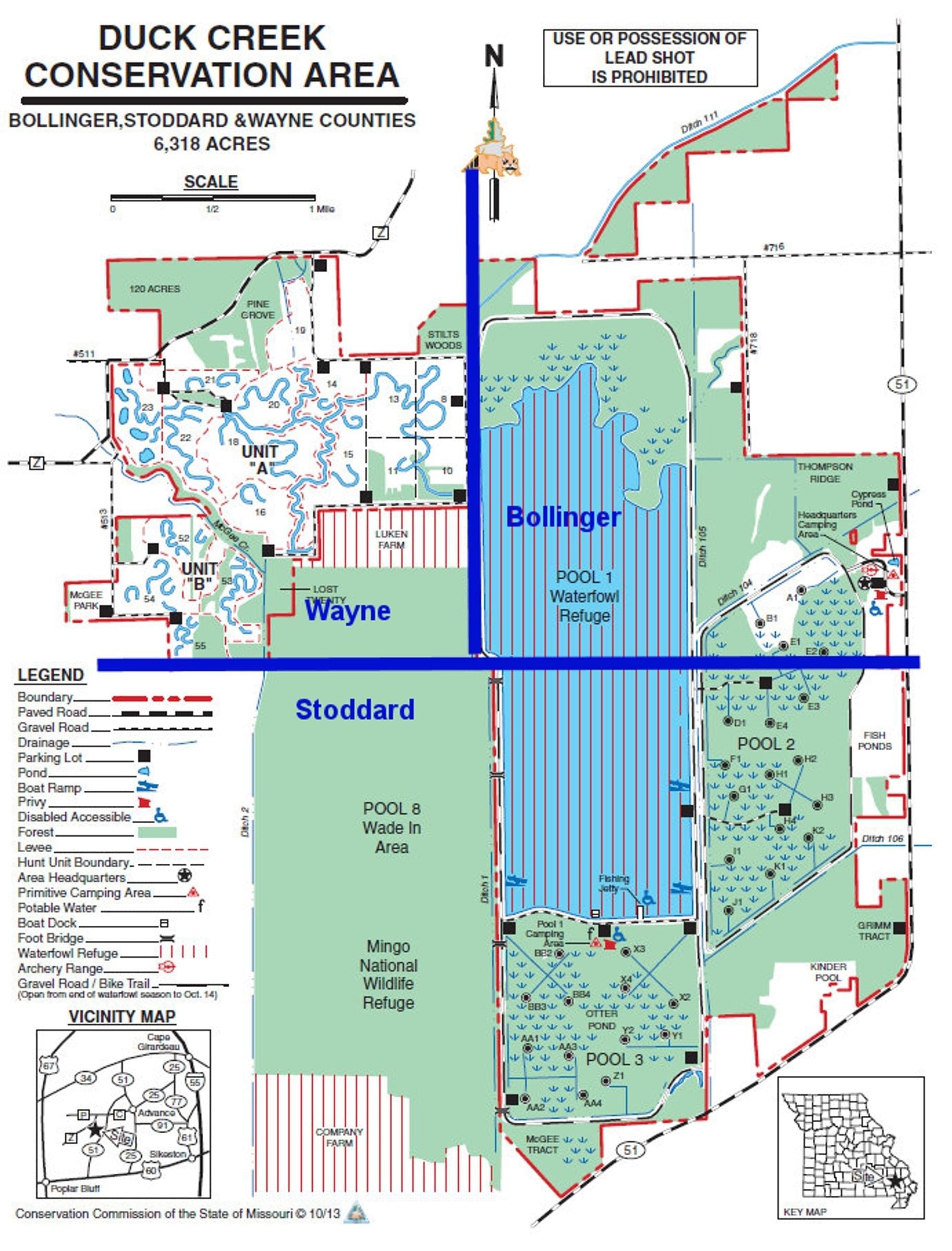
Duck Creek Conservation Area
Tips for Birding
Man-made Pool 1, with 1,800 acres of water visible from the perimeter road, is the crown jewel of this conservation area. This is the best spot for diving ducks and other water birds. With its many standing snags, it swarms with Tree Swallows in summer. Bald Eagles have nested here for many years, and last year Ospreys did too.
Pools 2 and 3 contain nearly 1,500 acres of the bottomland hardwoods that once covered the Bootheel. They are flooded during waterfowl season and are a magnet for Mallards and Wood Ducks. And of course, always prime for woodland birds. Both have perimeter roads and Pool 2 has short spur roads into the interior.
Units A and B are seasonally-flooded herbaceous wetlands. They are your best bet for dabbling ducks, waders, and shorebirds. Waders spotted here since 2020 include White-faced Ibis, Glossy Ibis, White Ibis, Roseate Spoonbill, and Hudsonian Godwit. Units A and B also contain the best winter sparrow habitat on the area. Don’t overlook Fish Ponds and Kinder Pool, which on a smaller scale are good for dabblers, shorebirds, and sparrows.
The Pine Grove and the pines around the HQ can be good in season for Pine Warbler and Red-breasted Nuthatch. And it seems that on every birding trip, the campground will produce a species or two that you haven’t found elsewhere on the area—especially winter woodland birds.
Birds of Interest
Nearly all of our migratory waterfowl have been seen here, especially in spring migration. You could see thousands of Ring-necked Ducks then. Common Loon and Horned Grebe are also possible at this time. Depending on the timing of seasonal flooding, the area can be very good for migrant shorebirds in some years. Expect all of the resident woodpeckers year-round and Yellow-bellied Sapsuckers in winter. Also in winter, look for Hermit Thrush, Winter Wren, Brown Creeper, kinglets, and Yellow-rumped Warbler. Orange-crowned Warbler is also possible. Fox Sparrow, Swamp Sparrow, and Field Sparrow are among the winter sparrows you might see. Of the 30 warblers seen here, most have been reported during spring migration.
In summer, expect Mississippi Kite and all of the common waders, including night-herons. Plus Wood Thrush, Summer Tanager, and all of our woodland vireos and flycatchers. Also, you’ll have a good chance for Prothonotary Warbler, Kentucky Warbler, Louisiana Waterthrush, and Yellow-throated Warbler. Other summer possibilities are Common Gallinule and Scissor-tailed Flycatcher. Among the year-round residents are Eastern Phoebe, Eastern Towhee, Black Vulture, and Bald Eagle.
About this Location
To access the Bollinger County hotspot, enter at the area HQ on Hwy 51. For Wayne County, you can enter Unit A from the north via Hwy Z and unit B from the west on CR 513. From the east, enter Unit A at a ditch crossing on the west side of Pool 1. A good strategy for the Stoddard County hotspot is to bird Fish Ponds and Kinder Pool and then enter the main part of the area at the southeast corner of Pool 3 along Hwy 51. Again, a good map will be quite useful at Duck Creek CA.
Content from A Birders' Guide to Duck Creek CA
Last updated September 19, 2023
 Duck Creek Conservation Area Map
Duck Creek Conservation Area MapMissouri Dept. of Conservation
